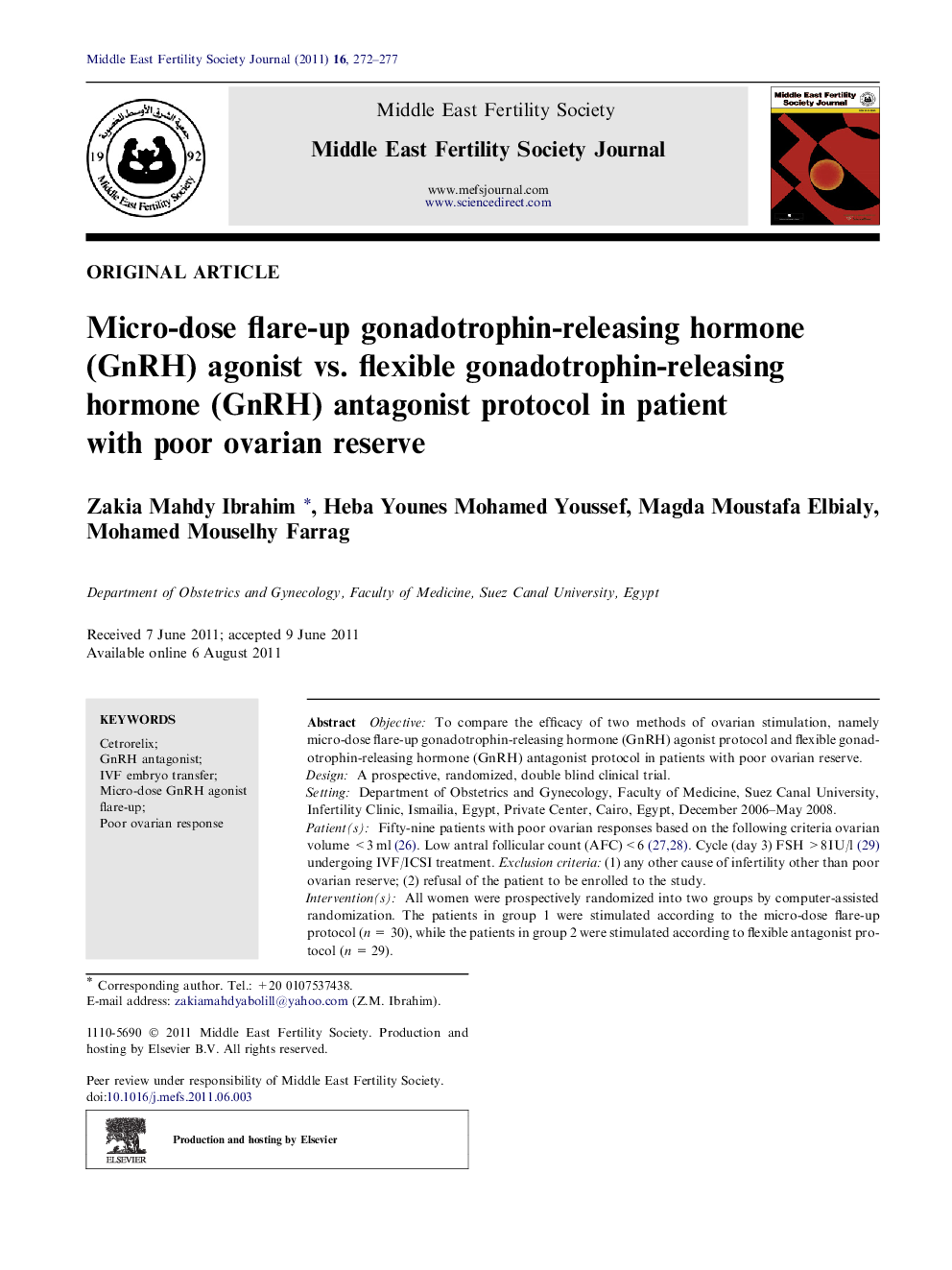| Article ID | Journal | Published Year | Pages | File Type |
|---|---|---|---|---|
| 3966322 | Middle East Fertility Society Journal | 2011 | 6 Pages |
ObjectiveTo compare the efficacy of two methods of ovarian stimulation, namely micro-dose flare-up gonadotrophin-releasing hormone (GnRH) agonist protocol and flexible gonadotrophin-releasing hormone (GnRH) antagonist protocol in patients with poor ovarian reserve.DesignA prospective, randomized, double blind clinical trial.SettingDepartment of Obstetrics and Gynecology, Faculty of Medicine, Suez Canal University, Infertility Clinic, Ismailia, Egypt, Private Center, Cairo, Egypt, December 2006–May 2008.Patient(s)Fifty-nine patients with poor ovarian responses based on the following criteria ovarian volume <3 ml (26). Low antral follicular count (AFC) <6 27 and 28. Cycle (day 3) FSH >8 IU/l (29) undergoing IVF/ICSI treatment. Exclusion criteria: (1) any other cause of infertility other than poor ovarian reserve; (2) refusal of the patient to be enrolled to the study.Intervention(s)All women were prospectively randomized into two groups by computer-assisted randomization. The patients in group 1 were stimulated according to the micro-dose flare-up protocol (n = 30), while the patients in group 2 were stimulated according to flexible antagonist protocol (n = 29).Main outcome measure(s)The mean number of oocytes retrieved was the primary outcome measure, number of mature oocytes retrieved, number of fertilized oocytes, number of embryos transferred, stimulation duration (days), total dose of gonadotrophin IU, estradiol concentration on the day of hCG administration, fertilization rate, implantation rate, ongoing pregnancy rate were secondary outcome measures, cancellation rate.Result(s)The use of flexible GnRH antagonist protocol ended with significantly less gonadotrophin requirements (2831.9 ± 623.02 vs. 3187.5 ± 704.04; p = 0.04) and a shorter duration of stimulation (9.6 ± 2.02 vs. 10.8 ± 2.4 days; p = 0.04). The fertilization rate (77.3% vs. 68.5), implantation rate (12.2% vs. 8.9%), and ongoing pregnancy rate (20.8% vs. 12.5%) were higher in the antagonist group but did not achieve statistical significance. The cancellation rate was higher in the agonist group (20% vs. 17.2%) but the difference was not statistically significant. The numbers of oocytes retrieved, mature oocytes, fertilized oocytes, embryo transfer, and the estradiol concentration on the day of hCG were not significantly different between the two groups compared.Conclusion(s)The role of flexile GnRH antagonist in women with poor ovarian reserves appear to be promising and further randomized clinical trials are needed.
